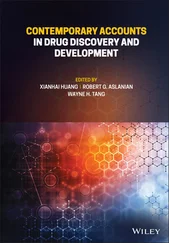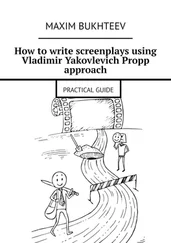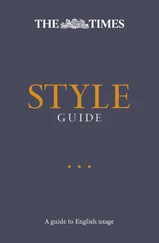79
3.3
Homographs
81
3.4
Paronyms
82
3.5
Faux amis (ложныe друзья´)
87
3.6
Problems of number
91
3.6.1 Nouns with plural form only
91
3.6.2 Nouns with singular form only
92
3.7
Russian words difficult to render in English
93
4
Problems of translation from English into Russian
98
4.1
English words difficult to render in Russian
98
4.2
Translation of the verb to be
150
4.3
Translation of English modal auxiliary verbs
154
4.4
Transitive and intransitive verbs
159
4.5
Translation of English forms ending in -ing
160
4.6
Translation of too, also, as well
162
5
Vocabulary and idiom
163
5.1
Neologisms
163
5.1.1 Western loanwords in Russian
163
5.1.2 Recent loanwords from English
165
5.1.3 Neologisms derived from existing Russian words
166
5.1.4 Slang
169
5.1.5 Computing terminology
171
5.2
Transition words
176
5.3
Fillers
177
5.4
Modal particles
179
5.5
Interjections
188
5.6
Vulgar language
190
5.7
Idioms
193
5.8
Proverbs and sayings (посло´вицы и погово´рки)
199
5.9
Similes
202
6
Language and everyday life
203
6.1
Measurement
203
6.1.1 Length, distance, height
203
6.1.2 Area
204
6.1.3 Weight
204
6.1.4 Volume
205
6.1.5 Russian pre-revolutionary units of measure
205
6.1.6 Speed
206
6.1.7 Temperature
206
6.2
Currency
207
vi
Contents
6.3
Fractions and presentation of numerals
207
6.4
Time
207
6.5
Telephone numbers
208
6.6
Postal addresses
208
6.7
Family relationships
209
6.8
Public notices
209
6.9
Abbreviations of titles, weights, measures and
common expressions
211
6.10
Acronyms and alphabetisms
213
6.11
Names of countries and nationalities
216
6.11.1 Russia and the other states of the former
Soviet Union
216
6.11.2 Other regions and national minorities of Russia and the
former Soviet Union
217
6.11.3 Europe (Eвро´пa)
218
6.11.4 Africa ( Áфрикa)
220
6.11.5 America (Aмe´рикa)
221
6.11.6 Asia ( Áзия)
221
6.11.7 The Middle East (Бли´жний Bосто´к)
222
6.11.8 Australia and New Zealand
223
6.12
Words denoting inhabitants of Russian and former
Soviet cities
223
6.13
Jokes (aнeкдо´ты) and puns (кaлaмбу´ры)
225
7
Verbal etiquette
228
7.1
Introductory remarks
228
7.2
Use of ты and вы
229
7.3
Personal names
230
7.3.1 First names (имeнa´)
230
7.3.2 Patronymics (о´тчeствa)
233
7.4
Attracting attention (привлeчe´ниe внимa´ния)
235
7.5
Introductions (знaко´мство)
237
7.6
Greetings (привe´тствиe)
239
7.7
Farewells (прощa´ниe)
241
7.8
Congratulation (поздрaвлe´ниe)
242
7.9
Wishing (пожeлa´ниe)
242
7.10
Gratitude (блaгодa´рностъ)
244
7.11
Apologising (извинe´ниe)
244
7.12
Request (про´сьбa)
245
7.13
Invitation (приглaшe´ниe)
247
7.14
Reassurance and condolence (утeшe´ниe, соболe´зновaниe)
247
7.15
Compliments (комплимe´нты)
248
7.16
Telephone conversations (тeлeфо´нный рaзгово´р)
248
7.17
Letter writing (пeрeпи´скa)
250
8
Word-formation
252
8.1
Principles of word-formation
252
vii
Contents
8.2
Types of consonant, spelling rules and consonant changes
253
8.2.1 Hard and soft consonants
253
8.2.2 Use of the hard sign
253
8.2.3 Devoicing of consonants
254
8.2.4 Spelling rules
254
8.2.5 Consonant changes
255
8.2.6 Epenthetic л
255
8.3
Verbal prefixes
255
8.4
Noun prefixes
263
8.5
Adjectival prefixes
264
8.6
The verbal infixes -ывa-/-ивa-
265
8.7
Noun suffixes
266
8.7.1 The principal noun suffixes
266
8.7.2 Noun suffixes denoting females
274
8.7.3 Miscellaneous noun suffixes
276
8.8
Diminutive, augmentative and expressive suffixes
277
8.8.1 Diminutive and hypocoristic suffixes
277
8.8.2 Double diminutive suffixes
279
8.8.3 The augmentative suffix -ищe/-ищa
279
8.8.4 Pejorative suffixes
279
8.9
The principal adjectival suffixes
280
8.10
Suffixes of participial origin
284
8.11
The verbal suffixes -ничaть and -aну´ть
285
8.12
Composition
286
8.12.1 Compound nouns
286
8.12.2 Compound adjectives
287
9
Inflection
288
9.1
Declension of the noun
288
9.1.1 Gender
288
9.1.2 Basic declensional patterns of the noun
289
9.1.3 Mobile vowels
291
9.1.4 Genitive singular forms in -у/-ю
291
9.1.5 Locative singular forms in -´y/-ю´
292
9.1.6 Masculine nouns with nominative plural in -á/-я´
294
9.1.7 Irregularities in the genitive plural of nouns
296
9.1.8 Irregularities in dative/instrumental/prepositional
plural forms
299
9.1.9 Nouns which are irregular throughout the plural
299
9.1.10 Nouns with irregular declension throughout
301
9.1.11 Declension of surnames
303
9.1.12 Indeclinable nouns
304
9.2
Declension of pronouns
305
9.3
Adjectival forms
307
9.3.1 Declension of adjectives
307
9.3.2 Formation of short adjectives
309
9.3.3 Formation of short comparatives
310
viii
Contents
9.4
Formation of adverbs
312
9.5
Declension of numerals
313
9.6
Verb forms
315
9.6.1 The system of conjugation
315
9.6.2 1A verbs
316
9.6.3 1B verbs with vowel stems and unstressed endings
316
9.6.4 1B verbs with stems in л and p and unstressed endings
316
9.6.5 1B verbs with vowel stems and stressed endings
317
9.6.6 1B verbs with consonant stems and unstressed endings
317
9.6.7 1B verbs with consonant stems and stressed endings
319
9.6.8 Second-conjugation verbs
322
9.6.9 Irregular verbs
324
9.6.10 Formation of the past tense
325
9.6.11 Formation of the imperative
326
9.7
Formation of gerunds and participles
328
9.7.1 Formation of imperfective gerunds
328
9.7.2 Formation of perfective gerunds
328
9.7.3 Formation of present active participles
329
9.7.4 Formation of past active participles
329
9.7.5 Formation of present passive participles
330
9.7.6 Formation of past passive participles
330
10
Читать дальше












